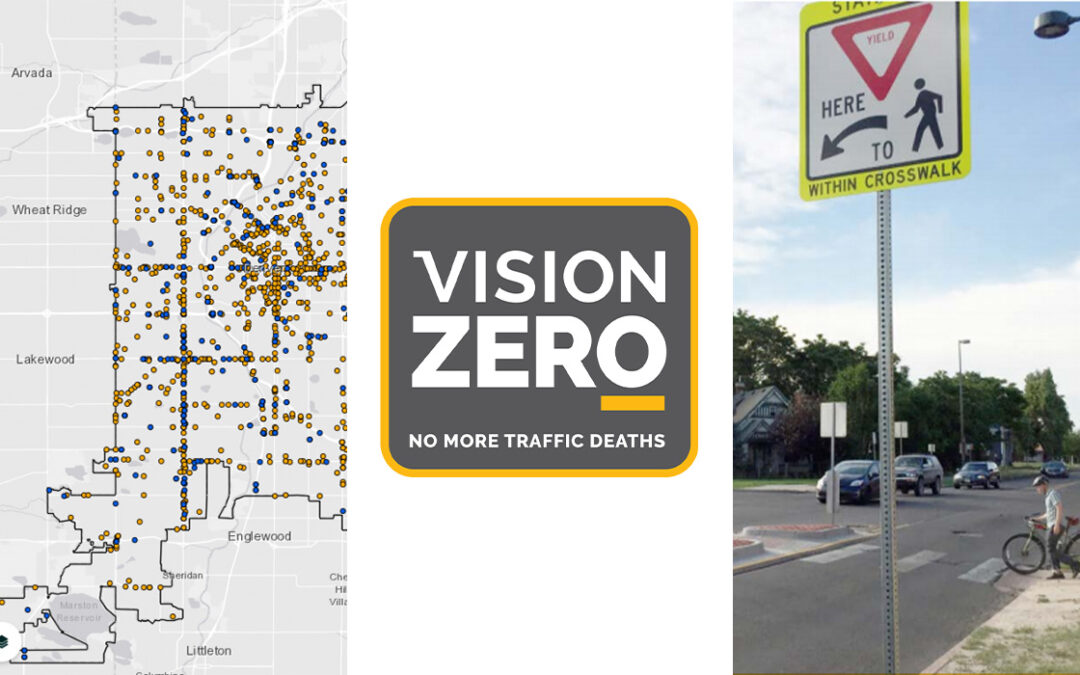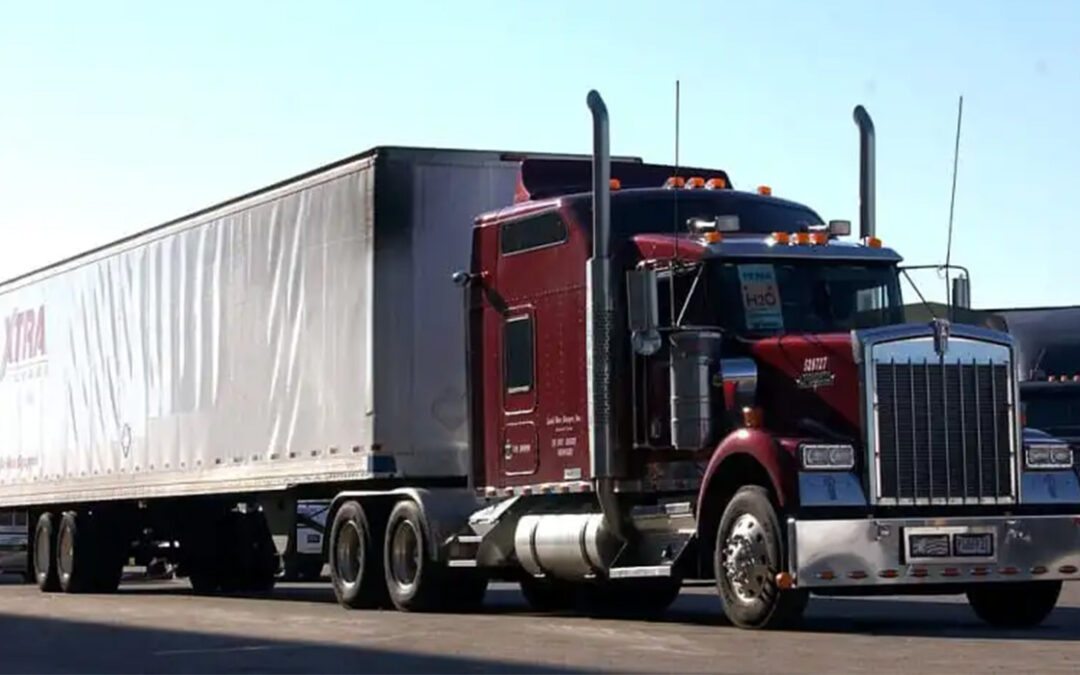
by Jennifer O'Connell | Jan 21, 2020 | Auto Accident, Bicycle Accident, Brain Injury, Bus Accident, CO Truck, Colorado, DUI, Kentucky, Motorcycle Accident, Pedestrian Accident, Personal Injury, Tennessee, Train Accident, Trucking Accident, Workers' Compensation
Queener Law Featured in VoyageDenver
We are thrilled to see Queener Law featured in VoyageDenver! What an honor!
We love their insightful questions that prompt us to think a bit more about how we got here and why we have made the choices we made along the way. The life of a business owner is full of forks in the road and choices. It is always important to look back and evaluate the road already traveled to help make the right decisions for the one ahead. We are also extremely happy that our client-centric focus came through. We purposefully keep out hometown feel and insist that our clients speak to a partner every time. We want to make sure our clients know how important they are and how dedicated we are to their cases. It was very exciting to hear that the editors wanted to see Queener Law featured in VoyageDenver to give us a chance to share that view with the community.
Check out the feature here!
Call us any time for a free consultation or to refer your friends or family members in need of help. No more being tossed around from attorney to attorney or case manager to case manager. At Queener Law, you will be in the capable hands of a partner and paralegals from start to finish. Your case deserves undivided attention, and so do you.
by Jennifer O'Connell | Dec 9, 2019 | Auto Accident, Bicycle Accident, Brain Injury, Bus Accident, CO Truck, Colorado, DUI, Kentucky, Motorcycle Accident, Pedestrian Accident, Personal Injury, Tennessee, Train Accident, Trucking Accident, Workers' Compensation
Getting Your Medical Bills Paid the Right Way
“The insurance company said they’d pay all my medical bills. Now they only want to pay a fraction of what I owe!’ We have heard this complaint almost daily in our decades of practice. What’s the reason and who’s the culprit? Of course, every story like this begins with the fact that car insurance companies are designed to collect premiums and not pay out. But that is not the only conspiracy happening here. Hospitals and medical providers have found ways to use the car insurance system to increase profits, as well. In a recent article in The New York Times, the master plan of hospital billing is broken down into the following steps:
1. Medical Swag
When you are in a wreck, the first thing the EMS or ER staff will do is slap on that age-old neck brace. Often, that neck brace either came free as medical sales swag or was bought in bulk at a rate of a few bucks each. When you get your medical bills in the mail, you find out that your insurance paid $100-plus and you owe an additional $20 bucks or so after insurance. You could get the same brace at your local pharmacy for much less. But when your chart is flagged for a car accident, out comes the medical swag. And in the end, all of this gets paid by the car insurance company… out of your settlement.
2. The Cover Charge
When you are taken to the emergency room, you get a bill. That we know. But did you know that this bill is just for use of the room? In essence, that bill is a “cover charge” for entry. In addition to that fee, which may vary depending on how emergent or traumatic your injury may be, there is a separate fee for every material used and every person who walks into the room. In many cases, you’ll even get a completely separate bill just for the use of a doctor, a necessary component of your emergency room visit. This bill, again, may vary based on what the hospital determines is the severity of your injury. Two guesses what they label car accident victims as in order to increase their bill.
3. Impostor Billing
Not only can you get billed for every person who walks in the room, but you may also receive a bill for people who you have never met. Medical billing allows for “consult billing,” even when the physician never consulted with the patient themselves. If a radiologist simply stops an orthopedist in the hallway for a second look at your x-rays, you get billed. These are not common charges, but we see them often in cases like auto accidents where the hospital anticipates deep pockets.
4. The Drive-By
In more serious cases, where post-ER treatment is required, you can get billed even before your first visit. For instance, if your injury requires physical therapy, a therapist can enter the room just to discuss your future therapy visits, and you will receive a bill for that conversation. A full assessment or actual therapeutic treatment is not required for the hospital to bill for it.
5. Avectus
We have added this prong because it is so prevalent and crushing to your in-pocket compensation while filling the hospital’s bank account. Hospitals allow representatives from Avectus or other lien companies to enter patients’ rooms, although they have no medical training or degrees and have not received consent from the patient or relatives. Their only purpose is to have medicated and shocked accident victims sign forms promising to pay the hospital’s bill in its entirety, regardless of whether they have health insurance. Why? Because the hospital does not want to take the contractual discount with the health insurance, and instead wants to take as much as possible from the auto insurance policy, in addition to all of your other medical bills.
The End Game
Why do we care so much about what the hospital is doing if the car insurance company is paying in the end? Why should you care about what money goes where? An auto insurance policy is like a bank account. Everything that comes out of it – including medical bills – reduces the amount in the account. In other words, every penny the hospital takes is one less for you. If your hospital bill is inflated simply because you were in an auto accident, your compensation for the injuries you sustained will go to the hospital rather than to you. If the auto policy available is only $50,000 and your hospital bill is $40,000, there is very little money left to pay remaining bills, reimburse your lost wages, or cover your future medical needs. And that’s if you don’t come out with a $75,000 bill and only $50,000 in automobile insurance. What can be done to stop this? Short of changing legislation, simply put, you need an attorney. Our office has decades of experience forcing hospitals to use health insurance and refusing to pay their liens if they are on notice and ignore us. We not only fight the insurance company on your behalf, but we also hold the hospitals to a high ethical and economical standard, refusing to let them dig into the policy that was meant to compensate you. Be aware and proactive with your health and your future. Work with a firm that has no blind side. We see the attacks coming, and will head them off at the start.

by Jennifer O'Connell | Oct 15, 2019 | Auto Accident, Bicycle Accident, Brain Injury, Colorado, DUI, Motorcycle Accident, Pedestrian Accident, Personal Injury, Trucking Accident
Current State of Denver Roads
If you haven’t seen the signs or the persistent social media posts about Vision Zero, then you have definitely seen changing road shapes around the Denver Metro area. Extra bike lanes are going in, barriers between motor and bike lanes are building up, speed barriers are popping up, and speed limits are dropping. This is all part of Denver Public Work’s efforts to stamp out traffic collisions and deaths, bringing the later to “Zero.” According to the City and County of Denver, an auto collision has a 40% Chance of causing serious or fatal injury at 30 mph. That stat, however, skyrockets to 73% just by increasing the speed to 40 mph. In the Denver city limits, as of October 12, 63 people have died in collisions, and since 2016, 41% of those were due to speed. Fatalities have continued to increase every single year for the last nine years. Of the 63 fatalities so far this year, 2 were cyclists, 17 were pedestrians, 15 were motorcyclists, and 29 were vehicle occupants.
Denver Vision Zero has set a county-wide goal to have zero traffic deaths by 2030. Rather, though, than simply announce a lofty goal and simply flash stats on overhead announcement boards on the highways, the City and County of Denver have enacted an Action Plan to take proactive steps towards the goal. The first step involved analysis. Vision Zero members analyzed not only fatal collisions themselves looking for causes, but they also constructed a map of the areas within the county lines at which there were serious or fatal collisions over the last six years. You can find this map below or interact by clicking here. You can clearly note roads like Federal, Colfax, and 6th Avenue lighting up like a light-bright as hotbeds for major collisions. In fact, an ancillary map highlighting just the routes labeled High Injury Network zones (HIM), shows that while these roads account for only 5% of Denver streets, the account for 37% of fatal collisions and 40% of serious injuries. And county-wide, motor-vehicle collisions account for twice the number of deaths than homicide. In fact, traffic collisions are the #2 leading cause of hospitalizations in Denver County.
It is also interesting to note that Vision Zero identified that most collisions in these HIN routes are crashes happening near schools and in neighborhoods primarily comprised of lower income, disabled, and elderly citizens. In these areas, speed, aggressive driving, distracted driving, and impaired driving were the top causes of serious and fatal collisions.
What are the next steps in the Action Plan?
The five priorities within the action plan, laid out for the public here, are:
- Enhance City Processes and Collaboration
- Build Safe Streets for Everyone
- Create Safe Speeds
- Promote a Culture of Safety
- Improve Data and Be Transparent
How does this translate into increased safety and less traffic collisions?
To the city and county government, enhancing city processes and collaboration includes adding departments within local governments focused primarily on traffic safety, including studies, economic appropriation, and governmental reaction to tragedies. And the “building safe streets for everyone” phase is already visible in many neighborhoods. Vision Zero has already begun re-configuring streets and intersections to reduce speed, enhance bicycle and pedestrian detection, and improving light and visibility at crossings. A part of phase two is also significant enough to the effort for Vision Zero to make a separately delineated phase. Creating safer speeds city-wide has begun in several parts, with greater speed enforcement, lower speed limits in neighborhoods and school zones, and street design changes to create safer cycling and walking lanes and force lower speeds for vehicles though the use of barriers and speed bumps.
The next phase seems tricky, and it is the opinion of Queener Law that the city has failed already in some aspects of the promotion of a culture of safety. When e-bikes and scooters hit the streets of Denver, the city was behind the eight-ball with education and regulation. Since then, the city has tripped over itself, releasing multiple complicated ordinances for how these multi-modal measures should interact with other established traffic, and education of the community has failed in spade. Traffic collisions involving scooters and bikes have continued to rise. Vision Zero intends to correct those mistakes, and make better efforts to educate and make available alternate modes of travel outside of driving. It is the opinion of the Vision Zero team that multi-modal methods will not only reduce traffic, but they should also reduce traffic deaths, aggressive and impaired drivers from occupying the road, and give a broad range of safe methods of transportation to the HIN zones.
Finally, Vision Zero does not intend to rest on the current data and act accordingly. They are making a promise to the community to continue the analysis and make honest reports to the public of the successes, failures, or stagnation of their efforts. Many more details of the Action Plan are available here. And Queener Law occupies a position on the Mobility Council for the Downtown Denver Partnership, an organization that tasks itself with advising local leaders of what our community members are thinking and feeling about the government’s actions with regards to safety. Take a look at what the local government has planned for your neighborhood, and let us know your thoughts. Queener Law will take them back to the Partnership and push for the government to be advised. We will ensure the government hears us, and therefore hears you, about our collective safety. Traffic collisions are not an inevitability. How do you think we can prevent them?

by Queener Law | Oct 27, 2018 | Colorado, Kentucky, Tennessee, Trucking Accident
Electronic Logging Devices Rule Held to be Constitutional
The Owner-Operator Independent Drivers Association filed a constitutional challenge against the electronic logging device rule, and the U.S. Court of Appeals for the 7th Circuit held that the rule is constitutional. It is on track to be fully implemented by Dec. 2017 unless the association appeals it to the Supreme Court of the United States. The regulation will require all large commercial trucks to have electronic devices installed, which will track and record whenever the trucks are in use.
The Lawsuit
The Owner-Operator Independent Drivers Association filed the lawsuit against the Federal Motor Carriers’ Administration on behalf of two truck owners. The drivers alleged that the regulation would violate their constitutional rights to privacy by recording all of their actions while they are driving. The court ruled on Oct. 31, 2016, holding that the electronic logging device mandate does not violate the constitutional right to privacy. The court found that the government’s interest in protecting other motorists outweighed any privacy issues. As a result, the rule is still scheduled to move forward. The plaintiffs have not said whether or not they intend to pursue the matter to the Supreme Court. If they do, and the court agrees to hear the case, it would be a final decision. If they do not appeal it, then the regulation will move forward.
Prior Lawsuit Against Previous ELD Rule Version
In 2010, the FMCSA had attempted to pass a prior regulation requiring electronic logging devices in commercial trucks. At that time, the Owner-Operator Independent Drivers Association filed a lawsuit against the FMCSA on the basis of constitutional privacy concerns. The Appeals Court held that the previous version was unconstitutional because it required the installation of cameras inside of the trucks. The current version does not, allowing it to pass constitutional muster.
Reasoning for the Rule
Large trucks have the potential of causing severe injuries and deaths when they cause truck accidents. This has led the government to institute numerous regulations on the trucking industry. The ELD rule is meant to prevent truck drivers from falsifying their log books and ignoring the hours-of-service rules. Those rules are in place to keep drowsy drivers off of the roads, a problem that a truck accidents attorney frequently sees in injury cases. A truck accidents attorney is hopeful that the new mandate will minimize the number of accidents that happen. Truck accidents often permanently change the quality of lives of their victims.

by Jennifer O'Connell | Sep 14, 2018 | Colorado, Trucking Accident
Data Collected by Trucks’ Black Boxes
When commercial truck drivers cause accidents in Colorado, it is important for the injured victims or the families of people who are killed to try to preserve the evidence that is contained on the trucks’ black boxes. Like airplanes, commercial trucks contain electronic control modules or electronic logging devices that record important data about the truck in the moments leading up to the crash that can help plaintiffs prove the fault of the truck drivers. This type of data has the potential to help to strengthen the claims of injured victims or of surviving family members.
The Federal Motor Carrier Safety Administration requires that all commercial trucks have electronic logging devices installed in them. These devices record such information as the speed at which the truck was traveling, whether the driver applied the brakes or the gas pedal, the change in the truck’s velocity after the impact, whether the driver was wearing a seat belt and whether the airbags deployed. They also record when the trucks are in motion and record data about multiple crashes and the time that elapses between them. All of this information can be important in a claim involving a commercial truck. Plaintiffs may be able to use the data to show that the truck drivers did something wrong so their cases are strengthened.
Getting Evidence From Black Boxes
Some electronic logging devices store information about the trucks while others transmit it back to the companies. Because of the possibility of the evidence getting sent to the companies, there is a potential that the companies might alter or destroy the data in an effort to avoid liability. Companies that destroy electronic evidence may face sanctions from the court. It is possible to secure a court order to preserve black box evidence by filing a motion for preservation of the evidence. This can prevent the trucking carrier from altering or destroying the data on the black box of the commercial truck that was involved in the accident.
While black box data is important, there are other types of evidence that can also help to prove liability. An accident reconstruction expert may review the scene and take photographs. He or she may measure any skid marks and complete calculations that might reveal the speeds and positions of the truck and the other vehicles. With strong evidence, plaintiffs are likelier to receive fair settlements.

by Queener Law | Aug 9, 2018 | Colorado, Kentucky, Tennessee, Trucking Accident
What is Relay Trucking?
Relay trucking could be the answer to improving truckers’ work/life balance, preventing accidents, and saving lives. According to the FMCSA and NHTSA, fatigued and overworked drivers cause most commercial truck crashes. The FMCSA requires drivers and carriers to observe implemented hours of service regulations. Even with those limits, drivers often work long shifts with few or no breaks and are under pressure to meet deadlines are more prone to causing accidents. Truckers who engage in point-to-point, full-truckload freight loads have a tough job. They stay with the freight from the time it has been loaded on their rig until they reach the load’s destination. The truckers spend long hours on the road and often days away from their homes and families. The FMCSA requires drivers to take breaks, and their rigs are outfitted with electronic monitoring to keep track of driving and rest hours. However, driver fatigue still happens.
Less-than-full loads use a hub and spoke system where trucks are changed at different hubs along the freight’s journey. But this method is too costly and time-consuming for full loads. However, relay trucking, a new approach suggested by researchers at Oregon State University could improve the quality of life for truckers and save lives. This new method would rely on a large-scaled mixed fleet dispatching system. With relay trucking, the length of a trucker’s full-load trip could be reduced by 66 percent without delaying the delivery process. While a driver gets the rest he needs, another driver along the relay route would take over at the specified relay point and take the load to the next relay point and so on until the destination is reached. Theoretically, this method could be more efficient because the freight is constantly moving, shortening delivery times.
Relay Trucking Can Help Save Lives
According to the IIHS, in 2016, 3,986 people died in large truck accidents. Other drivers or passengers on the road accounted for 66 percent of those deaths. Truckers are required to comply with federal regulations of driving no more than 11 hours at a stretch, but some violate the law and go longer than 11 hours. This increases their risk of causing an accident from driver fatigue. Relay trucking would reduce the number of hours a trucker would drive, reduce driver fatigue and help save lives.





